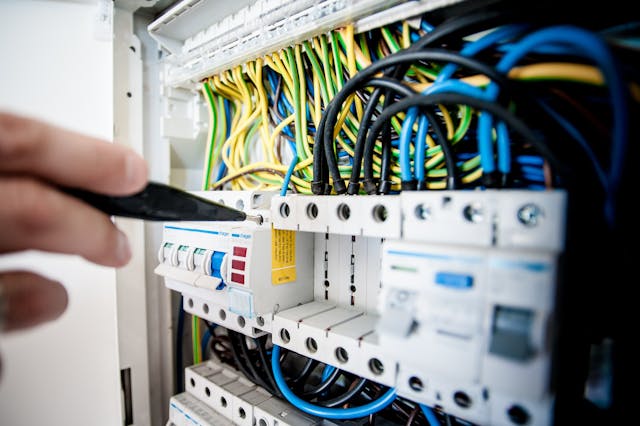Electrical installations are more than just a means to power a building—they can directly impact the integrity and hygiene of the structure. Improperly installed wiring creates hidden gaps, exposed conduits, and poorly sealed entry points that can become gateways for pests. From rodents to insects, pests often exploit weak points in electrical setups to access walls, ceilings, and utility spaces. Ensuring proper electrical installation is not only essential for safety and efficiency but also for minimizing pest-related issues that can compromise both building health and occupant comfort.
Planning for Pest-Free Electrical Systems
The first step in preventing pest problems through electrical work begins at the planning stage. Collaborating with electrical engineers and architects to determine the best routing for wiring, conduits, and panels ensures that openings in walls and ceilings are minimized. Every gap or poorly sealed conduit can become an entry point for pests such as mice, rats, or cockroaches. By planning the electrical layout carefully, construction teams can integrate wiring in a way that avoids creating hidden pathways that pests can exploit.
Planning should also account for future maintenance access. Accessible panels and service points allow electricians to perform inspections or repairs without disturbing finished surfaces, reducing the risk of creating new gaps or openings that pests could use. Anticipating these needs during design ensures a pest-resistant infrastructure from the start.
Installation Techniques That Limit Pest Access
Proper installation techniques are crucial for maintaining a pest-free environment. Conduits and wiring should be securely anchored and routed to minimize gaps between surfaces. Electrical boxes and outlets must be fitted tightly and sealed where they penetrate walls or floors. Using protective covers, gaskets, or sealants around openings can prevent small insects and rodents from gaining access to interior spaces. Exposed wires, loose fittings, or incomplete insulation can provide not only electrical hazards but also inviting pathways for pests.
Attention to detail during installation extends to every part of the system. Cabling in basements, attics, and crawlspaces should be elevated and enclosed where possible. These areas are often attractive to pests due to warmth, darkness, and availability of food or nesting materials. Properly installed electrical systems eliminate many of these opportunities, making it harder for pests to thrive undetected.
Coordinating with Building Materials and Finishes
Electrical installations do not exist in isolation—they interact with walls, ceilings, and other building materials. Integrating electrical systems with finishes in a coordinated way helps close off potential pest entry points. For example, wiring should be routed through sealed conduits within walls, rather than loosely running behind panels or drywall. Any penetrations for wiring, pipes, or ventilation must be sealed to prevent insects and rodents from exploiting gaps. This coordination ensures that the building envelope remains secure and reduces the likelihood of infestations.

Construction teams should also consider environmental factors. Areas prone to moisture, such as kitchens, bathrooms, or utility rooms, attract pests more easily. Electrical installations in these areas must be designed and executed to minimize exposure to damp conditions that can draw insects or rodents. Combining careful electrical work with moisture control measures creates a comprehensive defense against pest intrusion.
Maintenance and Inspection for Long-Term Protection
Even the best installation practices require ongoing attention. Regular inspections of electrical systems help identify potential vulnerabilities before pests can take advantage. Checking for loose conduits, damaged seals, or signs of chewing or nesting activity allows maintenance teams to intervene early. Prompt repairs and resealing prevent minor issues from becoming significant pest problems.
Routine maintenance also ensures that upgrades or expansions to the electrical system do not inadvertently create new access points. Whether adding circuits, installing new outlets, or updating panels, contractors must maintain the same standards of sealing and protection. By combining proper installation with proactive maintenance, buildings can remain both electrically safe and pest-resistant over time.
Integrating Safety and Pest Prevention
Electrical safety and pest prevention go hand in hand. Rodents chewing on exposed wires can cause short circuits, fires, or system failures. Insects nesting in outlets or junction boxes can create similar hazards. By emphasizing secure, well-planned electrical installations, construction teams address both safety and hygiene concerns simultaneously. Measures such as properly sealed conduits, elevated cabling, and protected panels reduce pest activity while ensuring that electrical systems remain reliable and code-compliant.
Forward-thinking buildings also integrate advanced monitoring and control systems to enhance both safety and pest prevention. Smart sensors, automated lighting, and controlled access points can help detect unusual activity, providing early warning signs of potential pest problems. Combining these strategies with sound electrical design creates a holistic approach to building management.
Conclusion
Proper electrical installations are more than a technical requirement—they are a critical part of maintaining a pest-free and safe building environment. From careful planning and strategic routing to secure installation, sealing, and ongoing maintenance, every aspect of the electrical system influences the ability of pests to access and inhabit a building. By addressing these considerations proactively, construction teams and building managers can protect both the integrity of the structure and the health of its occupants. Thoughtful integration of electrical systems from the outset ensures that wiring works efficiently, safely, and without inviting unwanted visitors.
